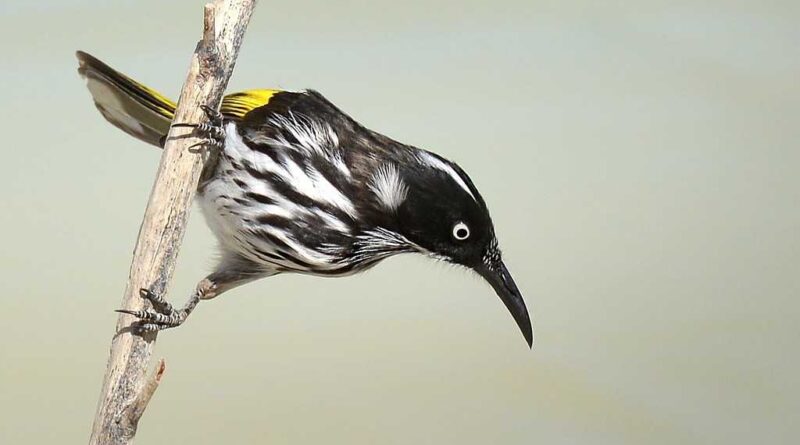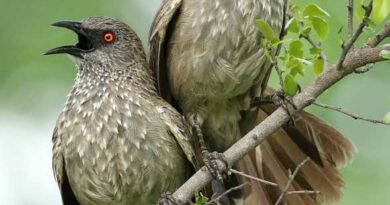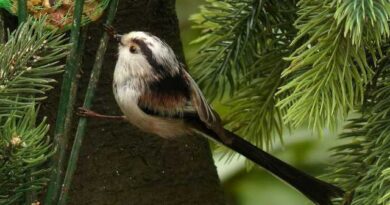HONEY-EATERS
HONEY-EATERS, Small to medium-sized, mainly nectar-feeding birds. There are 167 species. Most are found in Australasia and the Pacific Islands, but one species occurs in the Bonin Islands near Japan, and the two sugarbirds Pronerops are confined to the southern tip of Africa and isolated from the rest of the family. Honey-eaters are slenderly built, with strong feet enabling them to cling to twigs and plants in a variety of postures, a rather elongated and often slender bill, and a specialized brush tongue for extracting nectar from flowers. This tongue is long and narrow and can be extended beyond the tip of the bill. It is curled upwards and inwards along the cdges to form a double groove. The tip is brush-like, being split into a number of filaments.
Honey-eaters range from the size of small warblers or wrens to jays or magpies. Their habitats are equally diverse, ranging from moist tropical forest to dry heathland and semi-desert, although usually associated with flowering trees or shrubs. In addition to nectar, many species take insects and various small fruits.
The smallest, the Pygmy honeyeater Oedi-stoma pygmaeun, is olive-colored, less than 3 in. (7 cm) long, has a thin, decurved bill, and is very similar in appearance and behavior to a sunbird.
The largest honey-eaters are the Austra-lian wattlebirds; the yellow wattlebird Antho-chaera paradoxa of Tasmania is about 18 inches (46 cm) long. The wattles in this species are yellow pendent vermiform structures about 2 inches (5 cm) long, one on either side of the head behind the ear coverts.
The nests of honey-eaters are usually open and cup-shaped, placed in tree forks or partly slung between horizontal twigs, suspended from them by their edges. Fine strips of bark are often used for building such nests. Hair is used as a lining in many places, and birds will pluck hair from live animals, even human beings. Family: Meliphagidae, Order: Passeriformes, Class: Aves.



